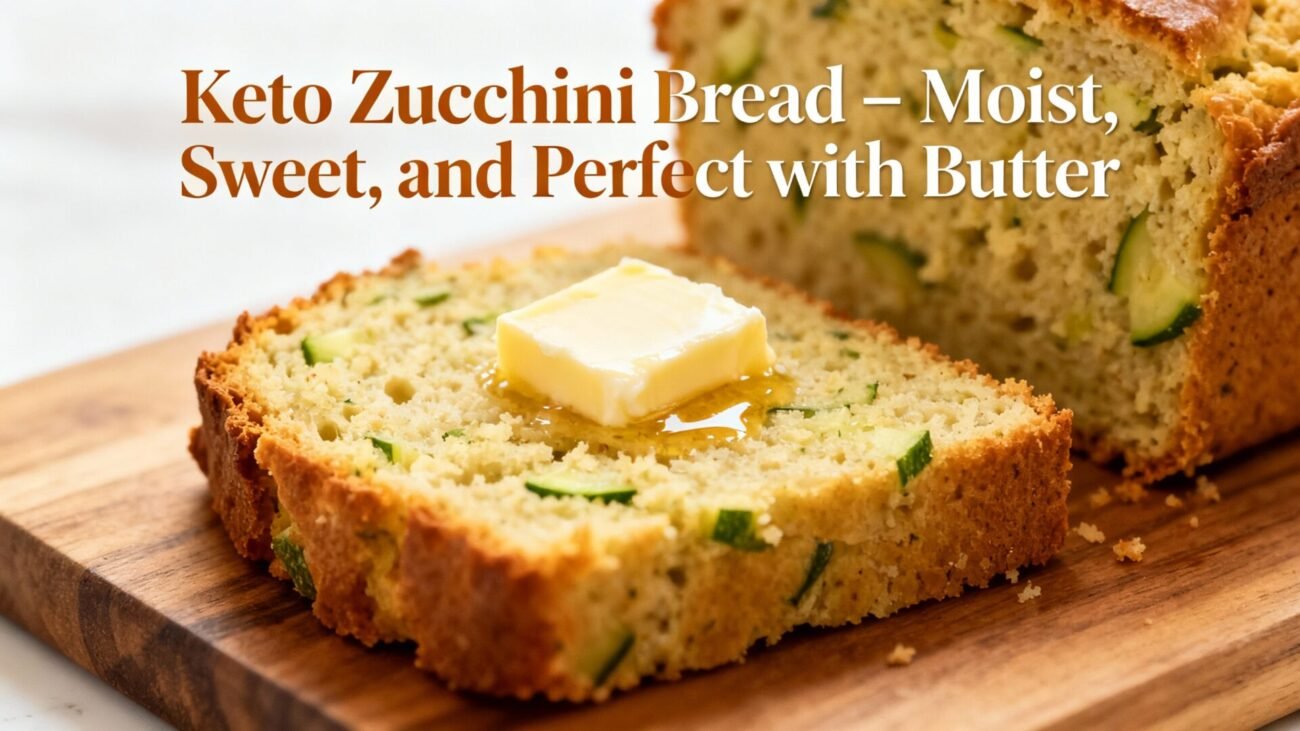You know what frustrates me? Dry keto baking. That crumbly, sandy texture that makes you wonder why you even bothered. After testing probably two dozen variations in my kitchen—some complete failures that went straight to the compost—I finally cracked the code. This isn’t just “good for keto” zucchini bread. This is genuinely excellent bread that happens to be low-carb. The kind where you have to stop yourself from eating three slices in one sitting.
What makes this different? Well, most keto zucchini bread recipes get the moisture part wrong. They’re either soggy in the middle or dry as dust. The secret isn’t just the zucchini—it’s the specific combination of fats and the way we handle the ingredients. I’ve made every mistake so you don’t have to.
Why This Keto Zucchini Bread is a Game-Changer
I’ve been developing keto recipes professionally for six years, and zucchini bread was one of the toughest nuts to crack. The traditional version relies so heavily on wheat flour and sugar for both structure and moisture that recreating it without those ingredients felt nearly impossible at first.
The Secret to Unbelievably Moist Keto Baking
The moisture thing—this is where most recipes fail. They’ll tell you to squeeze all the water out of your zucchini. Honestly? That’s backwards thinking. The zucchini’s natural moisture is actually your best friend in keto baking, where dryness is the enemy. The real trick is balancing that moisture with the right absorbent ingredients.
What I discovered through—frankly, too many kitchen experiments—is that the combination of almond flour and coconut flour does something magical. Almond flour provides the fat base, while coconut flour acts like a moisture regulator. It absorbs that beautiful zucchini water without turning gummy. The addition of both butter and eggs creates what we call in baking a “stable emulsion”—which basically means the fats and liquids play nicely together instead of separating.
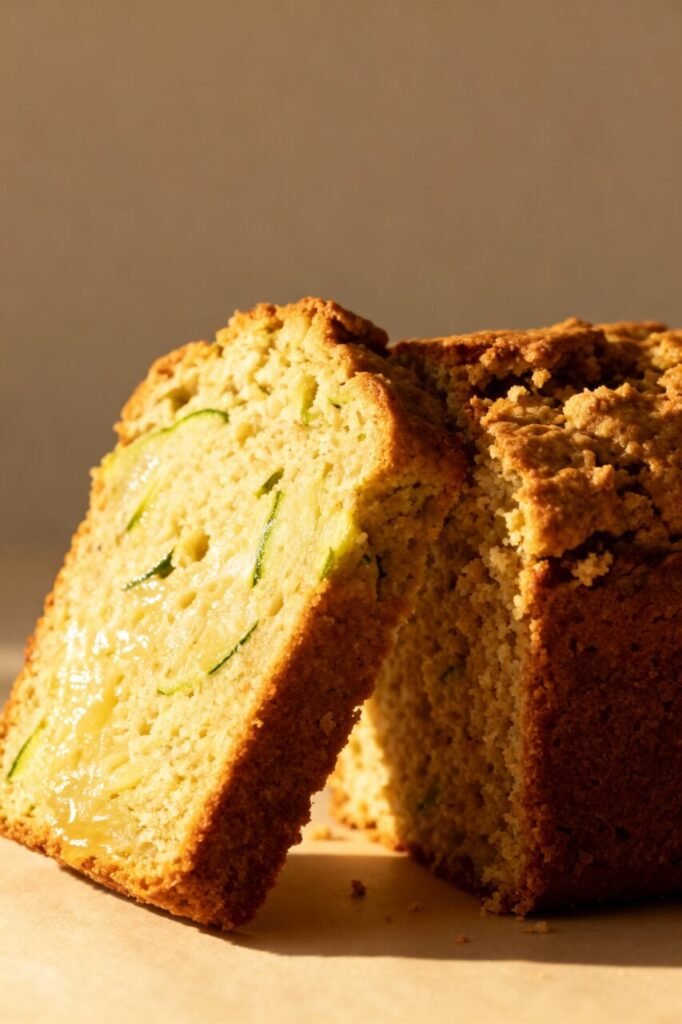
Mastering the Sweetness Without the Sugar
Here’s my professional opinion: most keto recipes are either not sweet enough or they use so much sweetener that you get that horrible cooling aftertaste. Through extensive testing—my family and recipe testers have been absolute troopers—I’ve found that monk fruit-erythritol blend is the winner here.
But it’s not just about which sweetener you use. The ratio matters tremendously. Too much and you get that artificial taste; too little and it tastes, well, vegetable-like. The cinnamon and vanilla aren’t just flavor additions—they actually enhance the perception of sweetness without adding carbs. It’s a psychological trick that works wonders.
What I’m using now is a specific ratio: for every 1 ½ cups of almond flour, I use ⅔ cup of monk fruit blend. This creates what I’d call a “breakfast level” sweetness—noticeably sweet but not dessert-level. You can adjust up or down from there based on your preference.
Gathering Your Keto Zucchini Bread Ingredients
The quality of your ingredients makes or breaks keto baking. I’m not saying you need to spend a fortune, but there are certain items where the brand actually matters. I’ve learned this the hard way through batches that just wouldn’t rise properly or had weird textures.
The Dry Ingredients: Building the Foundation
- 1 ½ cups blanched almond flour – Not almond meal. The blanched variety gives you that fine crumb texture without the gritty mouthfeel. Bob’s Red Mill is my go-to for consistency.
- ½ cup coconut flour – This stuff is incredibly absorbent. I’ve tried skipping it and the bread turns out too wet. Arrowhead Mills has never failed me.
- ⅔ cup monk fruit-erythritol blend – The golden ratio I mentioned earlier. Lakanto classic works perfectly.
- 1 ½ tsp baking powder – Make sure it’s fresh. Old baking powder won’t give you that nice rise.
- 1 tsp cinnamon – Ceylon cinnamon if you have it—it’s slightly sweeter and less bitter than the regular kind.
- ½ tsp sea salt – Fine grain dissolves better in the batter.
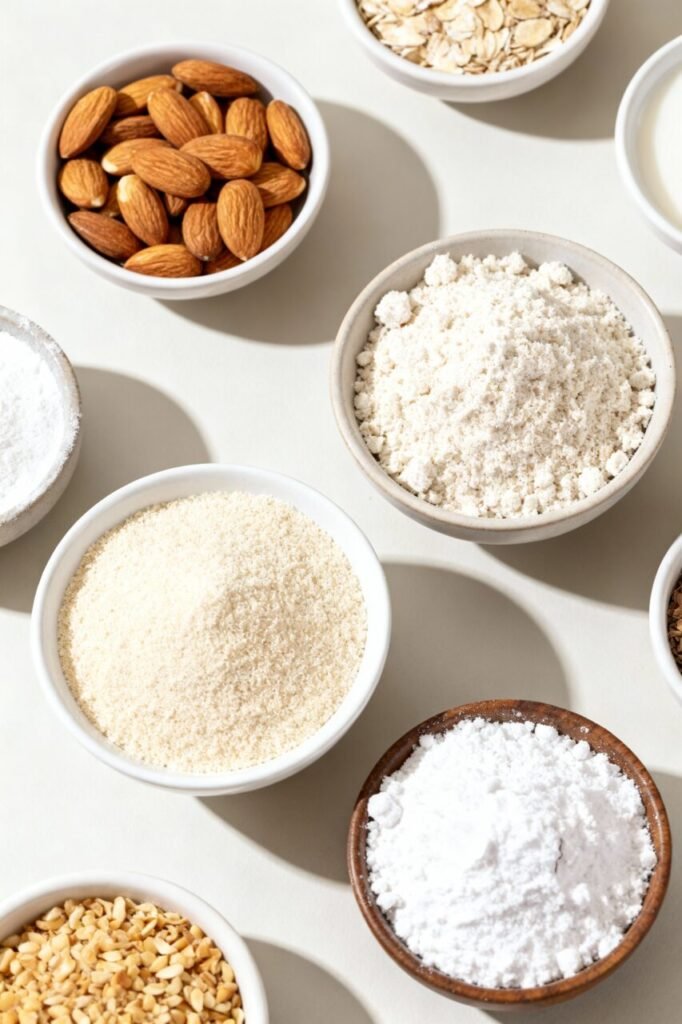
The Wet Ingredients: Creating the Perfect Texture
- 3 large eggs – Room temperature is non-negotiable here. Cold eggs don’t incorporate as well and can make your batter seize up.
- ½ cup melted butter – Unsalted, always. You want to control the salt level yourself.
- ⅓ cup unsweetened almond milk – This adds extra moisture without making the batter too heavy.
- 1 tsp vanilla extract – The real stuff, not imitation. The flavor difference is noticeable.
- 1 ½ cups shredded zucchini – About one medium zucchini. Don’t wring it out—we want that moisture.
The Secret Ingredient for that Classic Zucchini Bread Flavor
This might surprise you, but it’s the apple cider vinegar. Just one teaspoon. It doesn’t make the bread taste vinegary—instead, it reacts with the baking powder to create a better rise and tenderizes the crumb. It also helps balance the sweetness in a way that’s hard to describe but you’d definitely notice if it were missing.
The other “secret” is letting the batter rest for 5 minutes after mixing. This gives the coconut flour time to fully hydrate and absorb the liquids. Otherwise, you might end up adding more flour than necessary and creating a dense loaf.
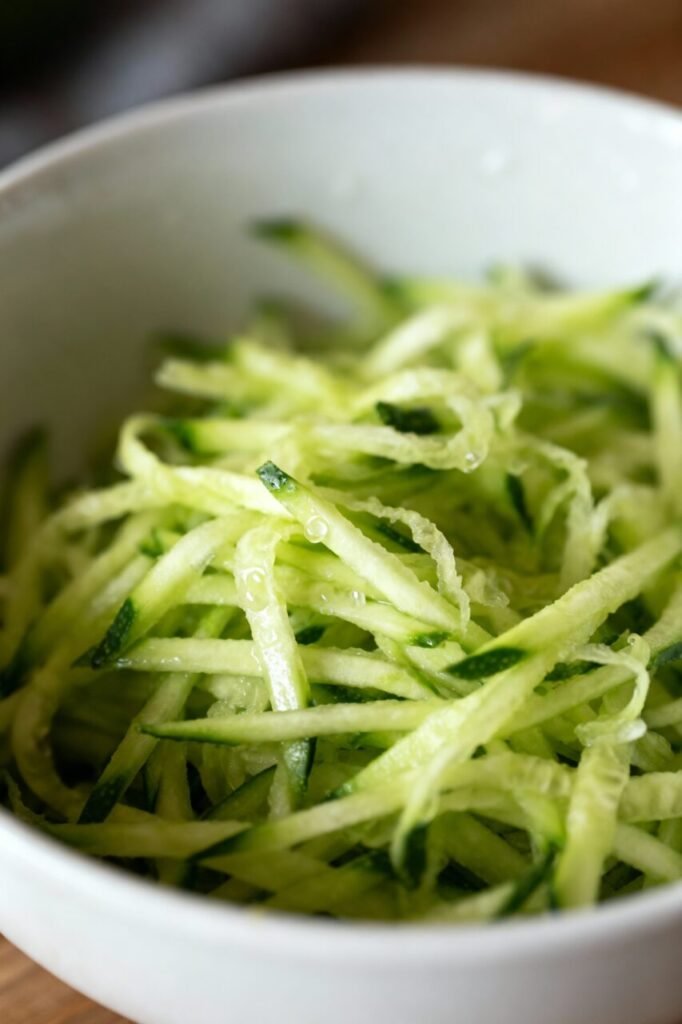
Baking Your Perfect Keto Zucchini Bread: A Step-by-Step Guide
I approach baking methodology differently than many food bloggers. See, I used to follow the “mix wet and dry separately” rule religiously, until I realized that for keto baking, it often creates overmixing. Now I use what I call the “well method” – and my results have been consistently better.
Preparing Your Zucchini the Right Way
Wash your zucchini, but don’t peel it. The green skin gives you those lovely specks throughout the bread. Use the large holes on your box grater—the smaller ones make the zucchini almost dissolve into the batter, and you lose that nice texture.
Here’s the controversial part: don’t squeeze the water out. Just shred it directly into your measuring cup. The moisture content is part of the precise balance we’re creating. If your zucchini is absolutely swimming in water, you can gently press it against the side of the measuring cup, but don’t wring it in a towel.
Mixing the Batter for Optimal Consistency
- Preheat your oven to 350°F and line a 9×5 loaf pan with parchment paper. Grease it lightly too—this isn’t the time for sticking disasters.
- In your large mixing bowl, whisk together all your dry ingredients. Make a well in the center. This old-school method actually incorporates everything more evenly without overworking the almond flour.
- Add all wet ingredients except the zucchini right into that well. Whisk from the center outward, gradually incorporating the dry ingredients. The batter will be thick—that’s normal.
- Fold in the zucchini with a spatula until just combined. Now, walk away. Seriously—let the batter rest for 5-7 minutes. The coconut flour will absorb moisture and the batter will thicken to the perfect consistency.
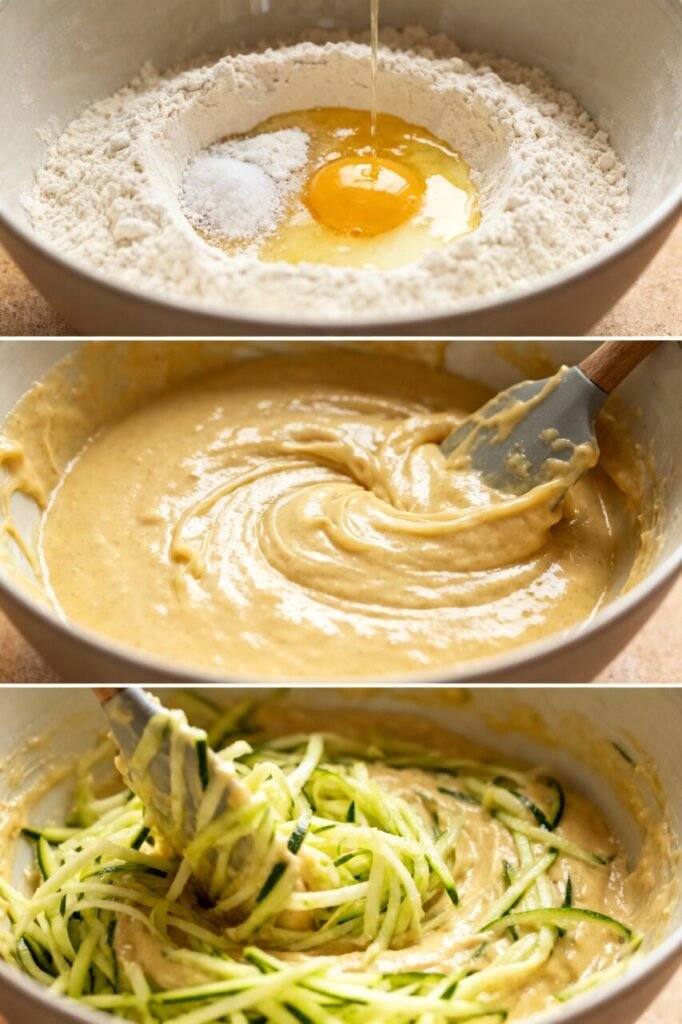
Baking and Testing for Doneness
Pour the batter into your prepared loaf pan and smooth the top. Bake for 50-60 minutes. Here’s my professional trick: don’t just rely on the timer. Start checking at 45 minutes by inserting a toothpick into the center. It should come out clean, but because this is moist bread, it might have a few crumbs—that’s fine. What you’re looking for is no wet batter.
The top should be golden brown and spring back when lightly pressed. If it’s browning too quickly, tent it with foil for the last 15 minutes. Oh, and this is crucial: let it cool in the pan for 15 minutes before transferring to a wire rack. I know it’s tempting to slice right in, but the structure is still setting during this time.
Storing, Serving, and Customizing Your Loaf
Now for the best part—actually enjoying your creation. This bread is versatile in ways that might surprise you.
The Best Way to Store for Maximum Freshness
Because this bread is so moist, it can develop mold faster than traditional zucchini bread. I store mine in an airtight container in the refrigerator for up to a week. The cold actually improves the texture, making it more cohesive.
For longer storage, slice it first and freeze the slices separately on a baking sheet before transferring to a freezer bag. This way, you can grab one slice at a time and toast it straight from frozen. It’ll keep for about three months this way.





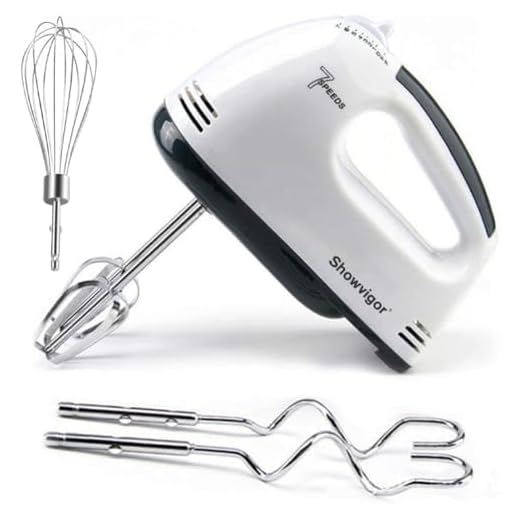
My Favorite Ways to Serve This Keto Zucchini Bread
Obviously, toasted with butter is classic. But my current obsession is spreading it with almond butter and a sprinkle of cinnamon—it makes an incredible breakfast. For dessert, I’ll sometimes top it with a dollop of whipped cream sweetened with a touch of the same monk fruit blend.
If you’re feeling fancy, French toast made with this bread is next-level. The zucchini keeps it moist inside while the outside gets crispy. Just dip slices in an egg-almond milk-cinnamon mixture and pan-fry in butter until golden.
Image Prompt: A beautifully styled shot of two serving suggestions: one slice toasted with melting butter, another with almond butter and a sprinkle of cinnamon. Show the texture difference between the two preparations.
Simple Swaps and Add-Ins to Make it Your Own
The basic recipe is fantastic, but sometimes you want to mix it up:
- Chocolate chip version: Add ½ cup sugar-free chocolate chips to the batter
- Nut crunch: Fold in ⅓ cup chopped walnuts or pecans
- Lemon zest: Add 1 tablespoon for a bright, fresh twist
- Spice variation: Try pumpkin pie spice instead of cinnamon for a fall flavor
If you need to be dairy-free, coconut oil works instead of butter, but the flavor will be different—more coconut-forward, obviously. For egg-free, I’ve had success with flax eggs, though the texture is slightly denser.
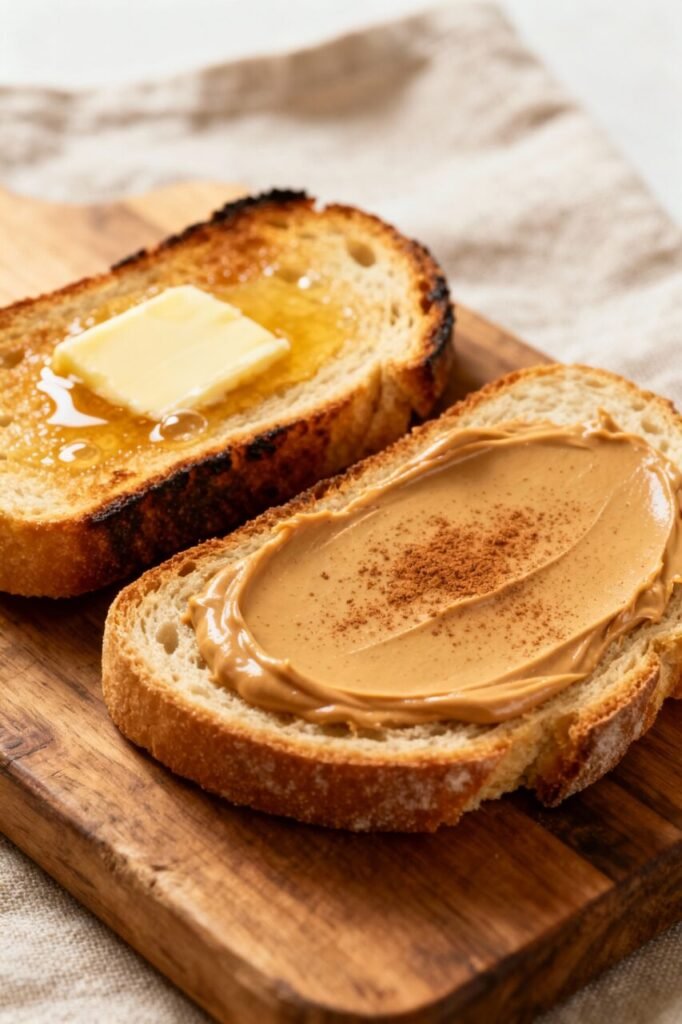
Frequently Asked Questions
Can I use a different keto-friendly sweetener?
You can, but the results will vary. Monk fruit-erythritol blend behaves most like sugar in baking. If you use pure erythritol, you might get a slight cooling aftertaste. Stevia drops are tricky because the liquid content changes the moisture balance. If you must substitute, allulose works well but browns faster, so you might need to reduce oven temperature by 25°F.
Why is my zucchini bread wet or gummy?
This usually happens for one of three reasons: the oven temperature was too low, the bread wasn’t baked long enough, or there was too much moisture in the batter. Make sure your oven is properly preheated and use an oven thermometer—many home ovens run hot or cold. Also, remember that the bread continues to set as it cools.
Can I make this recipe into muffins instead?
Absolutely! Divide the batter into 12 muffin cups lined with parchment liners. Bake at 350°F for 22-28 minutes. The toothpick test still applies. Muffins are actually great because they have more surface area for that lovely browning.
How many net carbs are in a slice of this keto zucchini bread?
When sliced into 12 pieces, each slice has approximately 4g net carbs. This can vary slightly based on your specific ingredients, particularly the brand of almond flour. The zucchini itself contributes very little to the carb count—most of it comes from the almond flour.
My bread is dense. What did I do wrong?
Dense bread usually means either overmixing or old baking powder. With almond flour, you want to mix until just combined—no more. Overmixing develops the proteins in a way that creates density. Also, check your baking powder’s expiration date. If it doesn’t fizz when you add it to water, it’s time for a new container.
Can I freeze keto zucchini bread?
Yes, and it freezes beautifully! Let it cool completely, slice it, then freeze the slices on a baking sheet before transferring to a freezer bag. This prevents them from sticking together. To serve, toast straight from frozen or thaw at room temperature.
Do I need to squeeze all the moisture from the zucchini?
No, and please don’t! The moisture in the zucchini is calculated into the recipe balance. If you squeeze it out, your bread will likely be dry. If your zucchini seems exceptionally watery, you can press it gently against the side of the measuring cup, but that’s it.
There you have it—everything I’ve learned about making truly exceptional keto zucchini bread. This isn’t just another recipe; it’s the culmination of years of testing and tweaking. The method matters as much as the ingredients, so follow the steps closely your first time, then make it your own.
I’d love to hear how it turns out for you—tag me on Instagram if you share photos! Nothing makes me happier than seeing your successful bakes.






